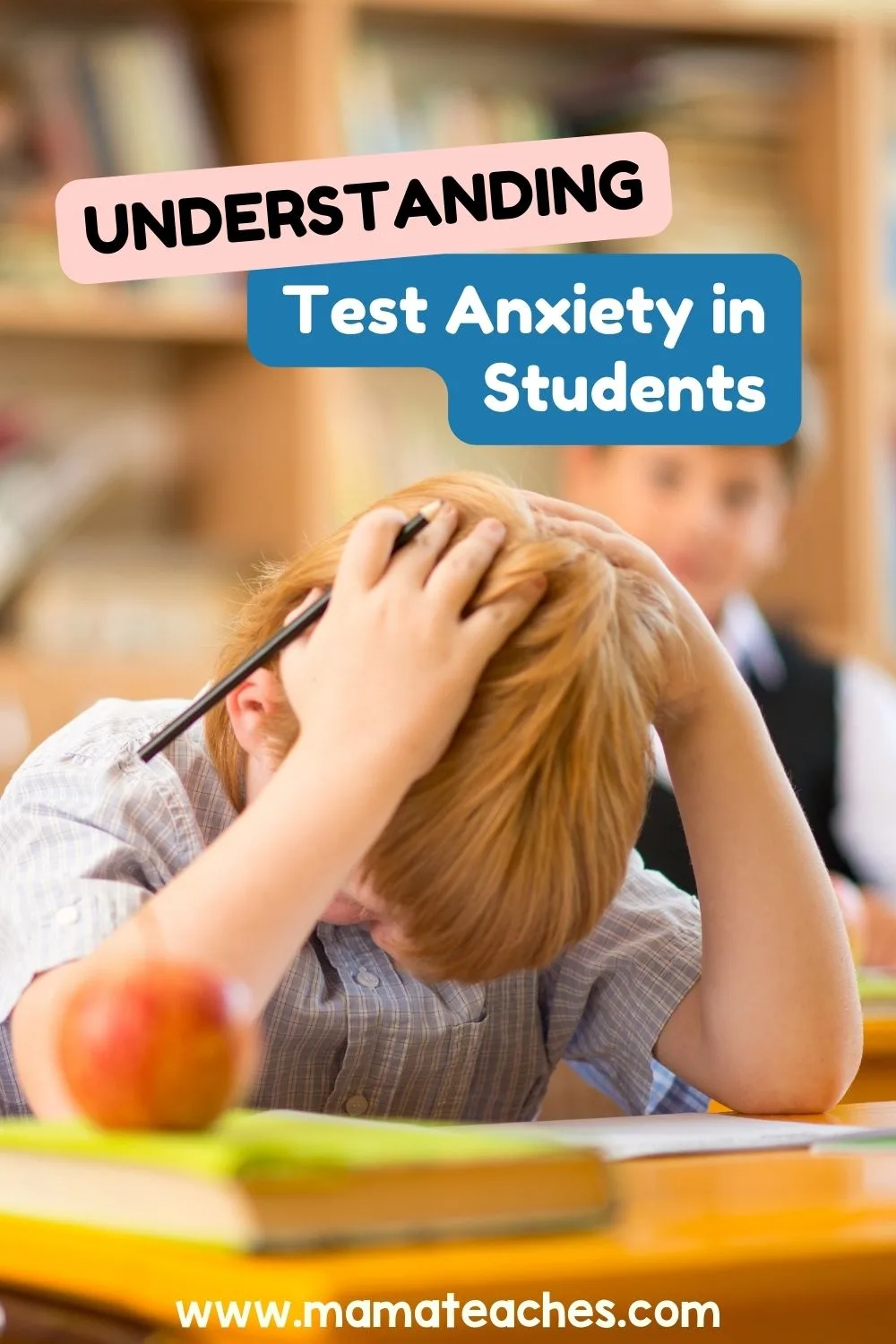What is test anxiety, and how does it manifest itself? Find out how to identify it and minimize it.

What Is Test Anxiety?
Test anxiety is a form of performance anxiety that can strike before, during, or after a test.
In general, it is a feeling of nervousness or unease whose symptoms can be physical, emotional, and cognitive.

This article contains affiliate links to things that you might like.
Test Anxiety Symptoms
Although some amount of test anxiety is expected (and perhaps even helpful), an excess of anxiety can significantly affect the student.
Physical Symptoms
The physical symptoms of test anxiety include increased heart rate, rapid and shallow breathing, sweating, nausea, stomach ache, headache, and trembling.
Emotional Symptoms
Test anxiety can affect a student’s emotions.
She may feel nervous to the point of dread. She may be restless or irritable.
Although it is normal to feel overwhelmed, in extreme cases, a student may experience panic attacks (which have physical and cognitive symptoms as well).
Test anxiety may have long-term emotional consequences. If the student habitually performs poorly on tests, he may suffer from low self-esteem.
Cognitive Symptoms
A small degree of test anxiety can sharpen performance on a test, but an excess causes cognitive function to falter.
A student with test anxiety may experience racing thoughts, difficulty concentrating, and the inability to recall what he knows (“mind going blank”).
Test anxiety can cause a student to perseverate on negative thoughts, either before, during, or after a test.

Causes of Test Anxiety
The test may be the immediate cause of the anxiety, but its roots are much deeper.
Lack of Preparation
A lack of preparation can cause a student to dread an upcoming test.
Part of this may be the student’s fault; he did not spend the time preparing.
But it also may be that the student did not receive adequate preparation from the teacher (either in instruction or review).
He may not also have the resources to prepare at home.
Fear of the Unknown
If the student does not know what to expect on a test, she may feel fear of the unknown.
This dread abates once the student knows the layout of the test.
Fear of Failure
The fear of failure can paralyze a student and trigger test anxiety.
The fear may be irrational, but it feels real to the student.
Perfectionist Tendencies
Some students are perfectionists, meaning they see any performance lapse as a total failure.
Just because a student performs well in school does not mean he is immune to test anxiety.
Pressure from Parents or Teachers
The student may be receiving pressure from parents that increases text anxiety.
They could also feel pressure from teachers to do well.
The student fears the reaction of the parents or teacher, and that triggers anxiety related to testing.

Alleviating Test Anxiety
High levels of test anxiety are detrimental to the student.
Not only is the student miserable, but test anxiety can prevent you from adequately assessing what she knows–the whole purpose of a test!
Try these simple strategies to minimize test anxiety.
Prepare the Student
This may seem obvious, but preparing students for the test will reduce their anxiety.
Make sure your tests reflect the lessons from class. It’s not fair to test students on material you have not covered.
Spend time in class reviewing for a test.
Don’t assume that students know how to study. Teach them study skills.
Consider making a test prep sheet for the students to review before the test.
Explain to the students how the test will be structured so they know what to expect.
Teach Relaxation Skills
Telling someone to relax does not work; you must show them how to calm themselves.
Teach deep breathing and breathing exercises.
You can use guided imagery to introduce calming mental pictures to the student.
Show students how to stretch and relax muscles even while seated.
Talk about how to develop a pre-test routine. This involves eating right and sleeping well.
Before the test, the student could listen to relaxing music or focus on an uplifting quotation.
Use Positive Imagery and Practice Positive Self-Talk
Teach students to counteract dread and hopelessness by visualizing themselves doing well.
They should picture themselves answering questions correctly in order to take the test with confidence.
To fight against recurring negative thoughts, show your students how to use positive self-talk.
For example, before a test, a student can think, “I am prepared for this test. I know the material so that I can answer the questions correctly.”
During the test, a student can think, “I have the skills to answer challenging questions.”

Student Test Anxiety
If you want to know how to handle test anxiety in students, the first step is understanding what it is.
By knowing the causes of test anxiety and how to spot it, you can find ways to minimize the nerves so students can show what they know on the test.
